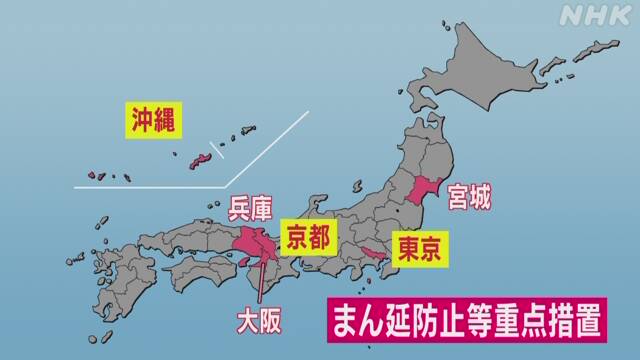On the 12th, the first night after the "priority measures to prevent spread" were applied to the three prefectures of Tokyo, Kyoto, and Okinawa, the number of people in the downtown area was 20% in Kyoto compared to the previous Monday, and in Tokyo. It decreased by nearly 10%.
Okinawa was almost the same as last week, but it has decreased by 8% compared to last month.
NHK is a person at 9 pm on the 12th about the downtown area of the area where "priority measures such as spread prevention" was applied using big data collected by NTT DoCoMo from mobile phone base stations in a form that protects privacy. I analyzed the number of.
Of these, in Tokyo, 8% decreased near Shinjuku / Kabukicho and 9% decreased near Shibuya Station compared to the previous Monday.
On the other hand, compared to the average on Monday of the last month, there was almost no change in the area around Shinjuku / Kabukicho, and the area near Shibuya station increased by 2%.
The area around Shijo Kawaramachi in Kyoto City decreased by 20% compared to the previous Monday and 24% compared to the average of last Monday.
The area around Kokusai-dori in Naha City was almost unchanged from the previous Monday, but decreased by 8% compared to last Monday's average.
In addition, the number of people in the vicinity of Shinsaibashi in Osaka City on the night of the 12th of the three prefectures, which was the second week after the "priority measures such as spread prevention" was applied, was 4% compared to the previous Monday, and the average for last Monday. In addition to a 17% decrease compared to the previous week, the area near Sannomiya in Kobe City was 3% from the previous Monday, 21% compared to last Monday's average, and the area near Kokubuncho in Sendai City was 3% from the previous Monday. Both decreased by 17% compared to last Monday's average.

